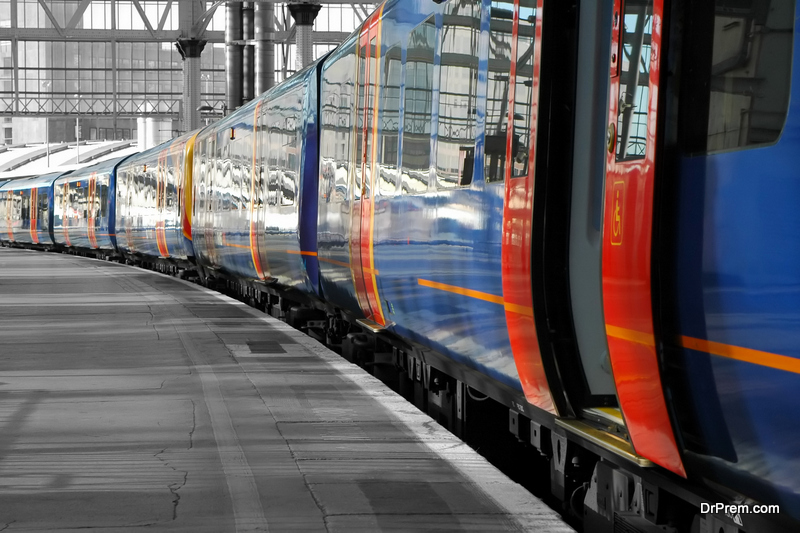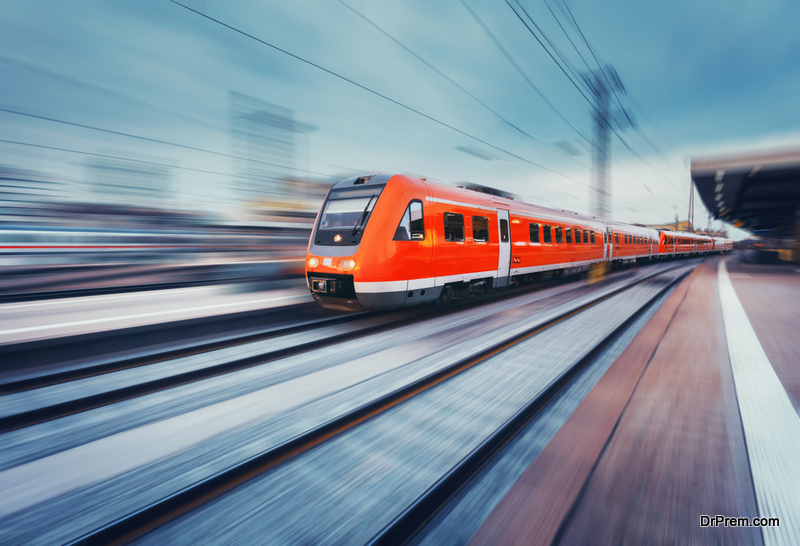As sustainability concerns of the everyday consumer heighten, every industry and the major companies within know that they need to create a greener product in order to survive. Within the world of transport, it’s fair the spotlight has primarily focused on the CO2 emissions of our cars and the impact of air travel, but that isn’t to say other key areas have been forgotten.
In the UK, trains represent one of our primary forms of travel, particularly when it comes to the work commute. While encouraged as a more sustainable travel solution, the railways still need to be conscious of their carbon footprint and how they can improve over the coming years. Here, we look at how improvements are being made to make one of the key areas of our transport sector a greener product for all.
On the train
 According to the Association of Train Operating Companies (ATOC), CO2 emissions have reduced by 12.6g per passenger kilometre since 2005.This is steady progress, with train companies now committed to minimising their environmental impact on carbon, noise and waste fronts.
According to the Association of Train Operating Companies (ATOC), CO2 emissions have reduced by 12.6g per passenger kilometre since 2005.This is steady progress, with train companies now committed to minimising their environmental impact on carbon, noise and waste fronts.
One of the primary factors within this has been the introduction of regenerative braking technology within train units – a move which can achieve energy savings of up to 20%. On top of this, driver training schemes now feature a focus on driving more efficiently, and automated driver advisory systems have been equipped in trains to provide live and bespoke advice on increasing efficiency – a move which has saved a further 10% of energy consumed.
Further advances include development of diesel fuel additives to increase engine efficiency, as well as community programmes to reduce noise pollution where applicable.
At the station
Commitment to environmental improvement doesn’t stop off the tracks.At stations around the country, operators have installed energy efficient lighting to reduce station consumption by up to 40%, harvested rainwater to reuse in lavatories and sinks and utilise photovoltaic cells to harness solar power in providing electricity for the station.
Train companies are also committed to producing strong recycling numbers, with recycling rates of items like unwanted news papers increasing across the board.
Reducing the carbon footprint of the future
 Of course, the challenge to produce greener travel is never complete, and the railways will continue to pledge improvements on their services as one of the biggest landowners in the UK. As passenger demand grows, train companies will look to improve their footprint through the continued electrification of routes to decarbonise energy generation, a further focus on energy efficient driving and weight reduction of new train fleets.
Of course, the challenge to produce greener travel is never complete, and the railways will continue to pledge improvements on their services as one of the biggest landowners in the UK. As passenger demand grows, train companies will look to improve their footprint through the continued electrification of routes to decarbonise energy generation, a further focus on energy efficient driving and weight reduction of new train fleets.
Companies themselves will also continue to support local environmental causes alongside working with the community, while the wider effort to push train travel as a greener solution will also go on. We’ll also see an increased emphasis on encouraging travellers to take shorter, lesser known journeys by rail instead of car –for example, trains from Brighton to Three Bridges have become more popular in recent years.
Train providers can boast of being one of the greener travel options available, but still have a long way to go in maximising the green efficiency of their services. With a focus on the ideas and process mentioned above, we can hope to see a more sustainable service in the future.
Article Submitted By Community Writer


